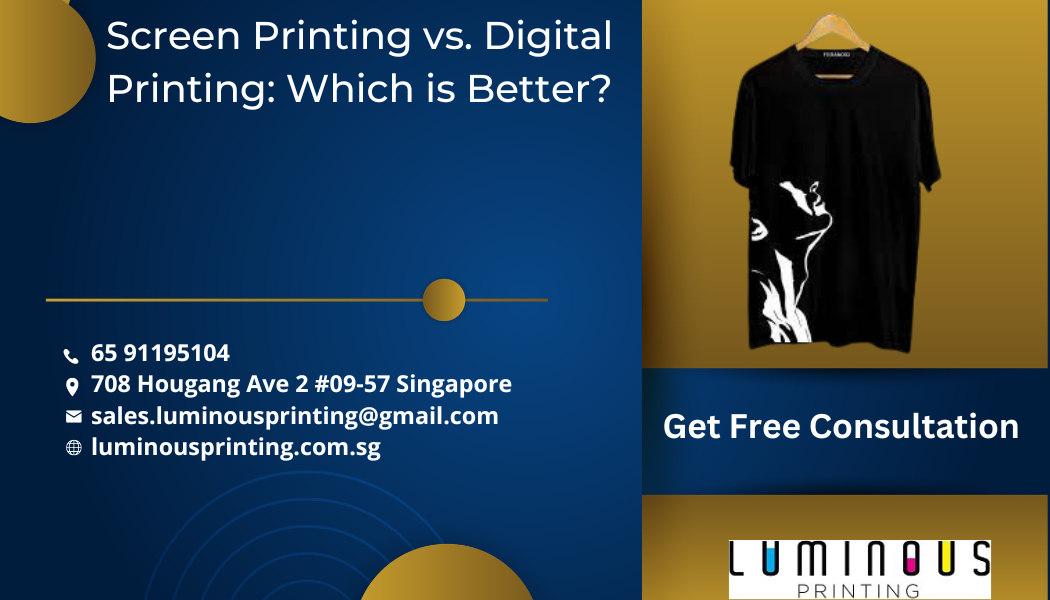Some Known Facts About Tx Tees.
Some Known Facts About Tx Tees.
Blog Article
The Tx Tees Diaries
Table of ContentsHow Tx Tees can Save You Time, Stress, and Money.The Tx Tees StatementsThe Tx Tees PDFsTx Tees Can Be Fun For EveryoneWhat Does Tx Tees Do?Tx Tees for BeginnersTx Tees - Questions
Add up various other expenses, like the number of utilities it takes to run the store and the expense of ink and emulsion per layout. Take the print listed below.The solution needs to just be a few cents because you 'd just need to coat one display for this work. Just how much should you bill per tee shirt to make an earnings? Generally, printers attempt to make up to 45% profit on a print job. Below's a table to aid you determine that: total expense per thing percent of wanted earnings as a decimal (example:.25 or.45) revenue made per product per work Currently allowed's discuss the earnings of DTF.

With DTF, you can print a handful of t shirts, or simply one. Both screen printing and DTF have their niches in the globe.
Things about Tx Tees
The very best means to know? Ask about and see what print stores like yours are doing. screen printing shop. Attempt both out and see which you like much better
When you're choosing what sort of printing approach to make use of for printing your art work styles on your garments, it is very important that you recognize the differences in between these two methods so you can make the most of outcomes while decreasing expenses. Display printing is one of the most commonly used technique for printing designs on textiles.
DTG printing is also referred to as place or straight to garment printing because it prints only what is required instead of making a screen as screen printers do. https://www.imdb.com/user/ur179351644/?ref_=nv_usr_prof_2. Screen printing functions by screen filler squeegee display printing ink screen mesh display, then transferring the picture to garment using warmth and/or stress
The DTG printer utilizes special dye-sublimation inks that are used right into a pre-designed image by an electronic printing system. The inks enter into the fabric, enabling vivid colors and extraordinary detail. It's also referred to as spot or straight to garment printing because it publishes just what is needed rather of making a display as screen printers do.
Tx Tees Things To Know Before You Buy
It's much quicker - you can publish a fullcolor image in mins, as opposed to hours for display printing. Second, there's no set up time or costs involved - you can print any type of style you like, without having to produce a display. Third, there's no waste - due to the fact that display printers display print one style each time, they need to evaluate each color separately.
The paper is really pricey and can just be made use of as soon as. Once it's published on, it needs to be discarded. - The initial purchase price is less than the upfront financial investment of DTG printers- You can publish multi-color layouts one screen each time instead of having to print each color individually like DTG printing.

What Does Tx Tees Mean?
Instead of using screen mesh as screen printers do, dye sublimation printers utilize laser modern technology to move your images onto garments or paper. A warmth process transfers the dye from its solid-state straight right into the gas phase which subsequently fuses it onto material substratums when they are quickly heated to high temperatures under high stress.
Sublimation printing is eco-friendly. It utilizes less water than screenprinting, and because it doesn't involve making use of harmful solvents, it's secure for all sorts of clothing. The dye sublimation inks are additionally odor free when healed, unlike screen printers that utilize dangerous chemicals during the display printing process that leave behind an unpleasant smell.
They additionally save money on pricey devices like exposure systems because dye sublimation printers do not need a UV exposure device or a flash remedy oven that is normally made use of in display printing (custom screen printing). What is direct to garment printing (DTG Printing)? DTG printing is a digital screenprinting process that prints directly onto textile making use of specialized inkjet printers
What Does Tx Tees Do?
DTG printing supplies numerous benefits over standard screenprinting, consisting of the capability to publish photo quality photos, greater shade vibrancy, and the capability to publish styles on darker textiles. DTG printers function by heating up the textile ink till it develops into a gas. The gas after that penetrates the material, bonding with the fibers to produce a permanent print.

Screen printers simply prepare their screen after that begin publishing till they lack item or ink.- There is a vast array of seasoned display printers around the world, which can be practical for novices. - It's a slower process - screen printers typically need to await the ink to dry before they can publish the following color- Screen printers require hand-operated labor, so there's a greater understanding curve and it takes longer to create a high-quality layout- Display printing isn't as precise as DTG printing, so you may obtain some "blood loss" of colors from one component of the picture onto an additional otherwise done appropriately.
Getting The Tx Tees To Work
Nevertheless, instead of making use of screen mesh as display printers do, dye sublimation printers utilize laser technology to move your images onto garments or paper. A warmth procedure moves the color from its solid-state straight into the gas stage which consequently merges it onto fabric substratums when they are swiftly heated up to high temperature levels under high pressure.
Sublimation printing is environmentally friendly. It makes use of less water than screenprinting, and since it does not include using dangerous solvents, it's secure for all kinds of garments. The color sublimation inks are additionally odorless when healed, unlike display printers that make use of hazardous chemicals throughout the screen printing process that leave an undesirable odor.
They also conserve cash on costly devices like direct exposure devices because color sublimation printers do not call for a UV exposure unit or a flash remedy stove that is generally utilized in display printing. What is straight to garment printing (DTG Printing)? DTG printing is an electronic screenprinting procedure that publishes directly onto textile using specialized inkjet printers.
The Main Principles Of Tx Tees
DTG useful source printing offers many advantages over typical screenprinting, consisting of the capability to publish photo high quality pictures, higher color vibrancy, and the ability to print layouts on darker textiles. DTG printers work by heating the fabric ink up until it becomes a gas. The gas then permeates the fabric, bonding with the fibers to develop a long-term print.
Report this page